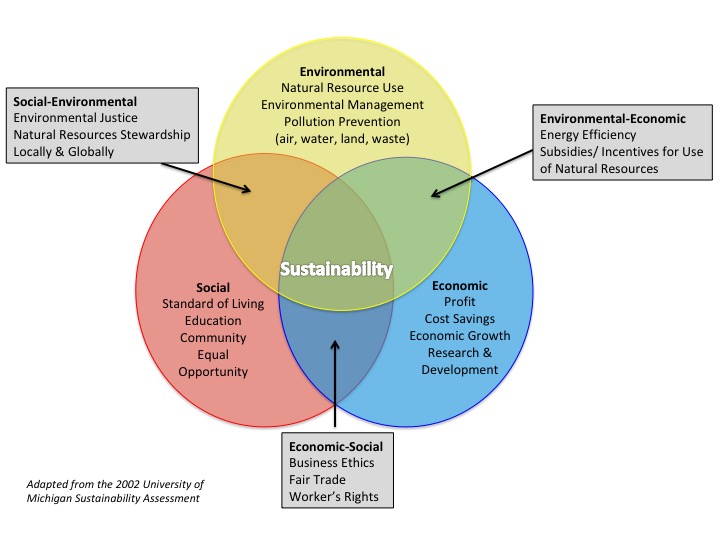Sustainable resource development is becoming an increasingly important concept for businesses and organizations to understand. As our planet’s resources become more limited, companies must focus on finding ways to develop those resources in a sustainable manner. What is sustainable resource development exactly?
Sustainable resource development involves strategies that prioritize long-term environmental stewardship while utilizing the Earth’s finite resources responsibly and efficiently. Companies can make use of various technology solutions, corporate responsibility initiatives, and other strategies to ensure their efforts are focused on sustainability over short-term profits or convenience.
In this article, we’ll break down what is sustainable resource development and how businesses can create successful programs with measurable results.
Table of Contents
What is Sustainable Resource Development?
Sustainable resource development is the practice of using resources in a way that meets current needs without compromising the ability of future generations to meet their own needs. It involves finding ways to use resources more efficiently, reducing waste, and conserving natural resources for future generations.
By implementing sustainable practices, companies can reduce costs while protecting the environment and ensuring long-term success.
What is sustainable resource development?
Sustainable resource development is an approach to managing natural resources that seeks to balance economic growth with environmental protection. This includes reducing consumption of non-renewable energy sources such as fossil fuels, improving efficiency in production processes, and investing in renewable energy sources such as solar or wind power.
What are the benefits of sustainable resource development?
Companies that adopt sustainable resource development practices benefit from lower operating costs due to reduced consumption of raw materials and improved efficiency in production processes. Additionally, they are able to demonstrate corporate responsibility by taking steps towards protecting the environment and promoting sustainability initiatives which may lead to increased customer loyalty and better public relations opportunities.
What are the challenges of sustainable resource development?
Implementing sustainable resource development strategies can be challenging for companies due to financial constraints or a lack of knowledge about sustainability initiatives.
There may also be regulatory compliance issues associated with certain types of projects which could require additional investments or expertise from outside consultants.
Strategies for Sustainable Resource Development
There are three key areas that should be included in any sustainable development plan.
Renewable Energy Sources
Renewable energy sources are a key strategy for sustainable resource development. Companies can use solar, wind, geothermal, and hydropower to reduce their reliance on fossil fuels and lower their carbon footprint.
For example, many companies have installed solar panels on the roofs of their buildings or in large fields near their facilities to generate electricity from the sun’s rays.
Wind turbines can also be used to capture kinetic energy from the wind and convert it into usable power.
Geothermal energy is another renewable source that utilizes heat stored beneath the Earth’s surface as an alternative form of power generation.
Lastly, hydropower harnesses potential energy from water sources such as rivers or oceans by using dams or other structures to capture and store it for later use.
Water Conservation
Water conservation and management practices are essential components of any sustainable resource development plan.
Companies should strive to reduce water usage through efficient irrigation systems, low-flow fixtures in bathrooms and kitchens, rainwater harvesting systems, and greywater recycling initiatives.
Additionally, companies should look for ways to reuse wastewater whenever possible instead of throwing it away after one use cycle. This could include treating wastewater for agricultural purposes or even reusing it within industrial processes if feasible.
Waste Reduction
Finally, waste reduction is an integral part of any sustainability program. Reducing what goes into landfills helps conserve natural resources while minimizing pollution caused by incineration plants or landfills themselves.
Companies should prioritize recycling initiatives wherever possible but also consider composting organic materials rather than throwing them away entirely. This not only reduces landfill waste but provides valuable nutrients back into soil ecosystems which helps promote healthy plant growth.
Implementing zero-waste policies where employees are encouraged (or required) to bring reusable containers with them when purchasing food items at work will help cut down on single-use plastics significantly.
Corporate Responsibility in Sustainable Resource Development
Corporate responsibility in sustainable resource development is a critical component of any company’s operations. Companies must ensure that their activities are conducted in an environmentally responsible manner and comply with applicable regulations.
Environmental Impact Assessments
Environmental impact assessments (EIAs) provide companies with information about the potential impacts of their activities on the environment. These assessments can help identify areas where improvements can be made to reduce negative impacts or enhance positive ones.
EIAs also allow companies to develop strategies for mitigating risks associated with their operations. Examples include reducing water consumption or minimizing air pollution emissions from manufacturing processes.
Regulatory Compliance and Reporting Requirements
Companies must comply with all relevant laws and regulations related to sustainable resource development. This includes reporting on progress towards meeting goals set by government agencies or other organizations such as ISO 14001 or the Global Reporting Initiative (GRI).
Companies should also consider establishing internal policies that go beyond what is required by law in order to demonstrate their commitment to sustainability objectives.
Collaborate With Stakeholders
Sustainable resource development necessitates collaboration between multiple stakeholders, including customers, suppliers, investors, employees, local communities, governments, non-governmental organizations (NGOs), and industry associations.
Companies must build relationships with these groups through meaningful engagement activities such as stakeholder dialogues or public consultations on proposed projects/initiatives.
Moreover, effective communication strategies should be implemented to ensure that stakeholders understand how they will benefit from participating in sustainability initiatives. For instance, providing clear information about how renewable energy sources will reduce greenhouse gas emissions while creating jobs for local communities.
Technology Solutions for Sustainable Resource Development
Technology plays a huge role in helping companies achieve their sustainability goals.
Automation and Data Analytics Tools
Automation and data analytics tools are used to streamline processes that support sustainable resource development. For example, a company could use an automated system to track its energy usage over time or analyze the impact of new policies on water consumption.
By leveraging these tools, businesses can make more informed decisions about how they use resources in order to reduce waste and maximize efficiency.
Cloud Computing Platforms for Sustainability Initiatives
Cloud computing platforms provide access to powerful software applications that enable companies to develop innovative solutions for sustainable resource development. These platforms allow businesses to quickly deploy applications such as renewable energy tracking systems or real-time monitoring of water quality levels without having to invest in expensive hardware infrastructure.
Smart Grid Technologies for Energy Efficiency
Smart grid technologies offer a range of benefits when it comes to improving energy efficiency within an organization’s operations.
Smart grids enable businesses to monitor electricity usage in real time so they can identify areas where improvements can be made.
Additionally, smart grids give companies the ability to adjust pricing based on demand which further encourages efficient use of resources across the board.
Overall, technology solutions have become increasingly important when it comes to developing strategies around sustainable resource development. They provide organizations with the necessary tools needed to measure progress toward meeting long-term goals related to environmental protection and conservation efforts.

(Source)
Measuring the Success of Sustainable Resource Development Programs
Measuring the success of sustainable resource development programs is essential for companies to ensure that their efforts are effective.
Establish Baseline Metrics
To measure the success of a sustainable resource development program, it is important to establish baseline metrics at the outset. These metrics should be based on specific goals set by the company and can include measures such as energy usage, water consumption, waste production, or recycling rates. This will provide an initial benchmark against which future performance can be compared.
Tracking Progress Over Time
Once baseline metrics have been established, it is important to track progress over time in order to assess whether a program is having its intended effect. Companies should monitor changes in their sustainability performance indicators regularly and compare them with their original goals in order to determine if they are making meaningful progress toward their objectives.
Evaluating Outcomes
Finally, companies must evaluate outcomes when measuring the success of sustainable resource development programs. This includes analyzing data from both internal sources (such as operational efficiency) and external sources (such as customer feedback).
By taking into account all relevant information available about a program’s performance, businesses can gain valuable insights into how successful it has been at meeting its stated objectives.
FAQs About What Is Sustainable Resource Development
Why is sustainable resource development important?
Sustainable resource development is important because it ensures that resources are managed responsibly and used in a way that preserves them for future generations. It also helps to protect the environment, reduce pollution, and promote economic growth by creating jobs and increasing income.
Sustainable resource development can help to ensure long-term access to essential resources such as food, water, energy, minerals, and other materials while preserving biodiversity. Additionally, sustainable resource development can provide communities with improved quality of life through better health outcomes.
What is sustainable resource?
Sustainable resources are materials or energy sources that can be used without being depleted. They are renewable and managed in a way that does not damage the environment.
Examples of sustainable resources include solar energy, wind power, hydropower, biomass fuels like wood pellets, and biogas from organic waste products.
Conclusion
What is sustainable resource development and why is it important?
Sustainable resource development is an important part of corporate responsibility. Companies that prioritize sustainable resource development will benefit from increased efficiency, cost savings, and a reduced environmental impact.
By committing to responsible practices in the use of natural resources, companies can ensure their operations are not only profitable but also beneficial for future generations.
We must take action now to develop sustainable resources for our planet. We need innovative solutions that reduce our reliance on finite resources and increase the use of renewable sources. By working together we can ensure a brighter future with healthy ecosystems powered by clean energy sources!
{“@context”:”https:\/\/schema.org”,”@type”:”FAQPage”,”mainEntity”:[{“@type”:”Question”,”name”:”Why is sustainable resource development important?”,”acceptedAnswer”:{“@type”:”Answer”,”text”:”
Sustainable resource development is important because it ensures that resources are managed responsibly and used in a way that preserves them for future generations. It also helps to protect the environment, reduce pollution, and promote economic growth by creating jobs and increasing income.
Sustainable resource development can help to ensure long-term access to essential resources such as food, water, energy, minerals, and other materials while preserving biodiversity. Additionally, sustainable resource development can provide communities with improved quality of life through better health outcomes. “}},{“@type”:”Question”,”name”:”What is sustainable resource?”,”acceptedAnswer”:{“@type”:”Answer”,”text”:”
Sustainable resources are materials or energy sources that can be used without being depleted. They are renewable and managed in a way that does not damage the environment.
Examples of sustainable resources include solar energy, wind power, hydropower, biomass fuels like wood pellets, and biogas from organic waste products. “}}]}





